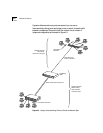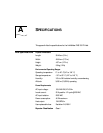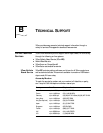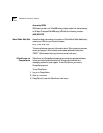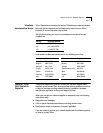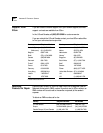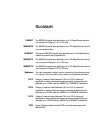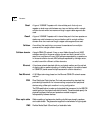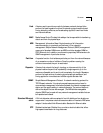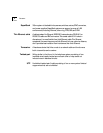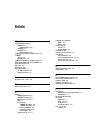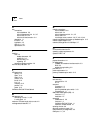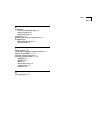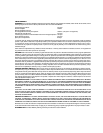
2 GLOSSARY
Class I A type of 100BASE-T repeater with internal delay such that only one
repeater or stack may exist between any two end stations within a single
collision domain when two maximum-length copper cable segments are
used.
Class II A type of 100BASE-T repeater with internal delay such that two repeaters or
stacks may exist between any two end stations within a single collision
domain when two maximum-length copper cable segments are used.
Collision A condition that results from concurrent transmissions from multiple
sources within a single collision domain.
Collision domain A single CSMA/CD network. If two or more Media Access Control (MAC)
sublayers are within the same collision domain and both transmit at the
same time, a collision will occur. MAC sublayers separated by a repeater are
in the same collision domain; MAC sublayers separated by a bridge, router,
or switch are within different collision domains.
Ethernet A local area network standard defining a physical medium and its method
of placing data, or packet signaling, on a cable. Access to the cable is based
on CSMA/CD (carrier sense multiple access with collision detection).
Fast Ethernet A 100 Mbps technology based on the Ethernet CSMA/CD network access
method.
FDDI Fiber Distributed Data Interface. The local area networking standard that
provides high bandwidth for interconnecting computers and peripheral
devices using a fiber-optic medium in a ring configuration.
The FDDI specification is made up of standards that correspond to the IEEE OSI
model layers (on the physical and data link levels). These standards specify the
physical interfaces, functions, and operations needed to support
interoperability between devices.
Fiber-optic cable Cable consisting of a glass center, cladding, a buffer layer, strength members,
and a cable sheath. The glass center supports the transmission of light signals.
FMS Flexible Media Stack. 3Com’s family of stackable hubs.



